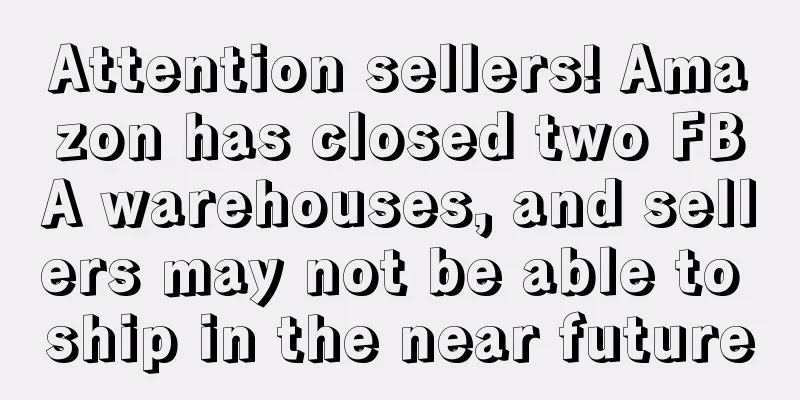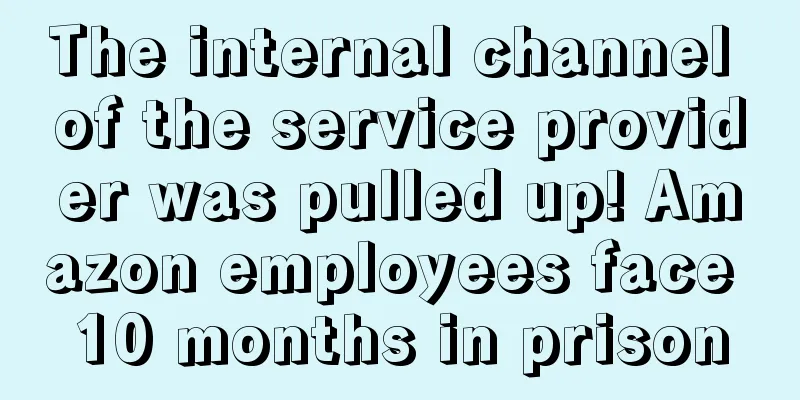Attention sellers! Amazon has closed two FBA warehouses, and sellers may not be able to ship in the near future

|
Goods shipped to the United States that do not comply with the new regulations will be detained Original announcement Amazon The U.S. Customs and Border Protection (CBP) has released new shipping guidelines on how to properly ship your inventory to Amazon logistics centers in the United States. The new shipping guidelines require sellers to provide the correct information in the correct format to help avoid your inventory being detained or delayed by CBP during the import process. For FBA goods eligible for duty-free entry into the United States, sellers must provide CBP with information about their identity, such as name or company name, through a shipping manifest or customs entry filing. Amazon recommends sellers use the following format: [Legal Name of Seller] c/o FBA Amazon Logistics Center Address When shipping imported goods to an Amazon fulfillment center, the fulfillment center may be listed as the consignee on your shipping documents. Here are some examples of how this should appear on your shipping documents: Amazon recommends that sellers consult with their carrier or customs broker for further guidance on your shipment. To learn more about how to properly format the product owner on customs documents, please review the CBP Guidelines. UPS requires that goods shipped to the US must include the FBA number Canada closes 2 FBA warehouses Limit the number of goods entering the warehouse according to different storage types Limit the number of goods entering the warehouse according to different storage types |
>>: Nearly 20,000 units sold in 20 days! Amazon's unpopular products also have high sales
Recommend
What is Aftership? Aftership Review
Aftership is a company that provides package track...
The truth behind Amazon’s new image policy…
Last week A message about Amazon's updated ima...
What is iSHARE? iSHARE Review
iSHARE is a social version of Amazon. Its platform...
[External Case] The first collaboration with a big-selling speaker
Recently, a big seller who is doing very well on A...
What is TrueMoney? TrueMoney Review
TrueMoney is an online payment service provider in...
How to check the lawyers on Amazon brand blacklist? How to check the lawyers’ qualifications?
Find a lawyer's name Open the website of the ...
How can sellers achieve accurate keyword layout and create high-quality listings in 2024?
1. Quick and intelligent listing generation It can...
What is takealot.com? Takealot.com Review
Takealot.com is a leading online retailer in South...
What is producttestinggroup? producttestinggroup review
ProductTestingGroup is another newly established A...
Just now! Amazon broke three pieces of news: revealing the policy of peak season promotion!
Just now, Amazon officially announced several new ...
What is Catch? Catch Review
Catch is a new mobile shopping app launched by eBa...
What is Sichuan Nuo Group? Sichuan Nuo Group Review
Chuannuo Group (Shenzhen Chuannuo Intellectual Pro...
The number of Walmart's third-party sellers has exceeded 100,000!
<span data-shimo-docs="[[20,"获悉,据Marketpla...
Share some Amazon trivia you may not know
Q1: How can I see the products after 100 on the BS...
WhatsApp pilots cryptocurrency payments! Real-time transfers and unlimited payments!
<span data-shimo-docs="[[20,"WhatsApp试点加密货...









